(This post may be a bit long for some email software, so if you don’t see “Next stop: Bodrum Castle” at the bottom of your email, you’ll need to click on the title to go to the website and see the full post).
The ancient name for the city of Bodrum is Halicarnassus, and Halicarnassus was famous for its theatre and for housing one of the seven wonders of the ancient world - the Mausoleum of Halicarnassus (the other six were the Colossus of Rhodes, the great Pyramid of Giza, the lighthouse of Alexandria, the statue of Zeus at Olympus, the Temple of Artemis at Ephesus and the hanging gardens of Babylon).
First up, the theatre.
The theatre was cut into the hillside above Bodrum using the tufa rock to support the upper seating. Sized to provide seating for 10,000 people this theatre is slightly unusual in that it is horseshoe shaped rather than strictly semicircular …. the sides are slightly extended. Over 2,000 years old and having been through a few earthquakes it’s no longer pristine, though there has been some restoration work conducted and more planned for the future. The theatre is still in use today (as evidenced by the stage set up when we visited) but only currently provides seating for 4,000 people. It’s still a big theatre … probably the biggest we’ve seen this year.
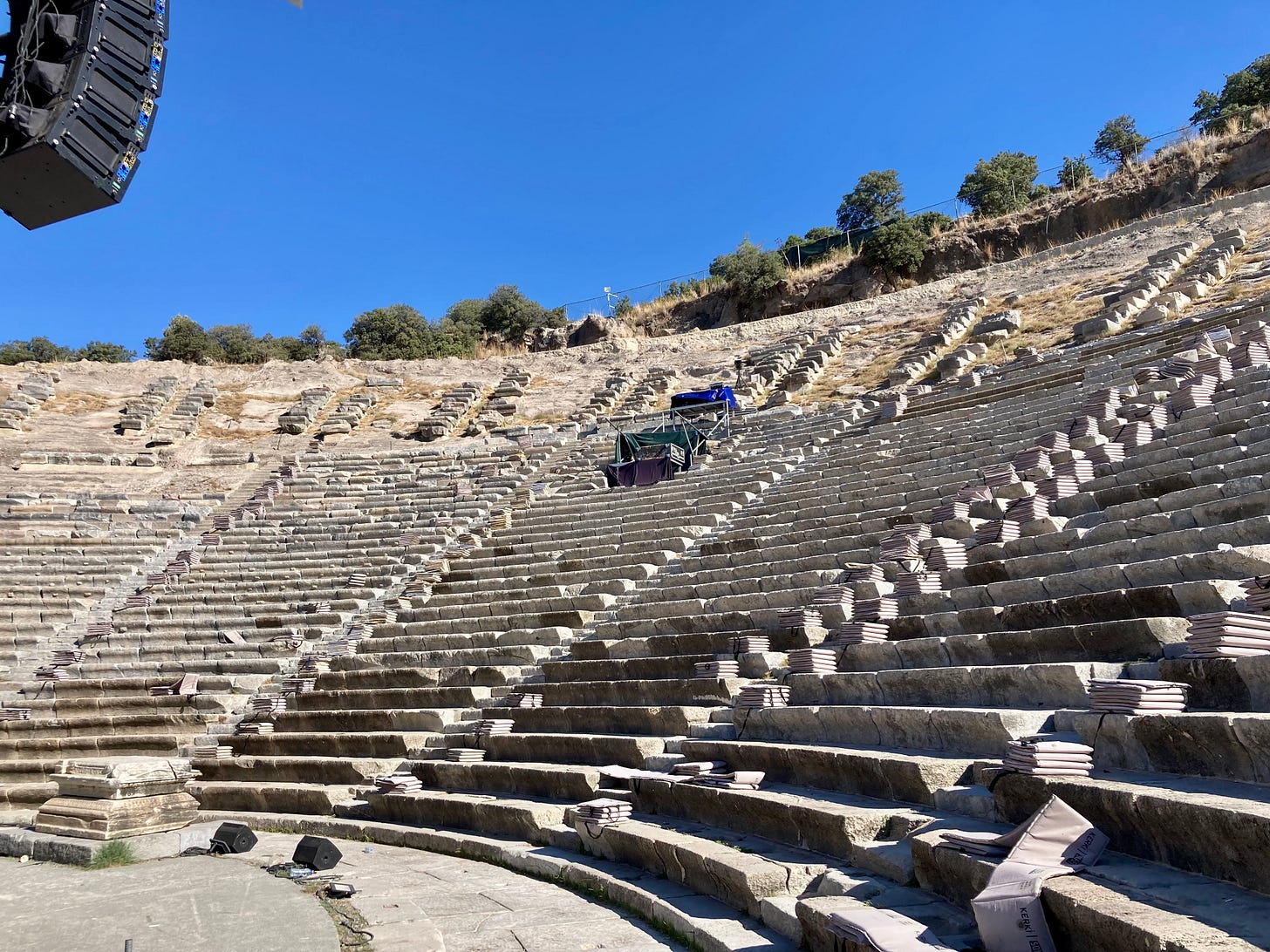
The Mausoleum of Halicarnassus was a large structure housing the tomb of King Mausolos and his wife Artemisia (who also happened to be his sister). Standing at over 50 metres high this structure was decorated with sculptures and bas relief carvings in stone and the term mausoleum came from this structure. The Mausoleum was celebrated as one of the seven wonders of the ancient world and although Alexander the Great conquered Halicarnassus and laid waste to the city, he ordered that the Mausoleum be left untouched. It’s just a pity that those who came later were not so wise.
Built between 353 and 350 BC, there is not much left of the Mausoleum at its original site these days. It stood for over 1,600 years until a large earthquake in 1304 caused the structure to collapse. At this time the Knights of St John (or the Knights of Rhodes, or the Knights Hospitallier if you prefer) had lost their home on Rhodes and were setting up shop in Halicarnassus. They took the stone from the Mausoleum and carted it down to the shore to build the large and rambling Bodrum Castle (Castle of St Peter). They also instigated the name change to Bodrum, by the way.
Most of the Mausoleum is now incorporated into Bodrum Castle and various elements can be seen in the castle structure, such as column bases included within the walls and towers. Only the foundations of the Mausoleum and a few scattered pieces of stonework remain on the site. Many of the statues and artwork from the Mausoleum were “rescued” and transported to the British Museum, including the statues of Mausolos and Artemisia that topped the structure (replicas of these statues are publicly displayed in Bodrum), where they remain on display today. Despite several requests to return these precious artworks to Turkey, the British Museum has refused to repatriate them and retains the best collection of artwork shamelessly stolen from other cultures.
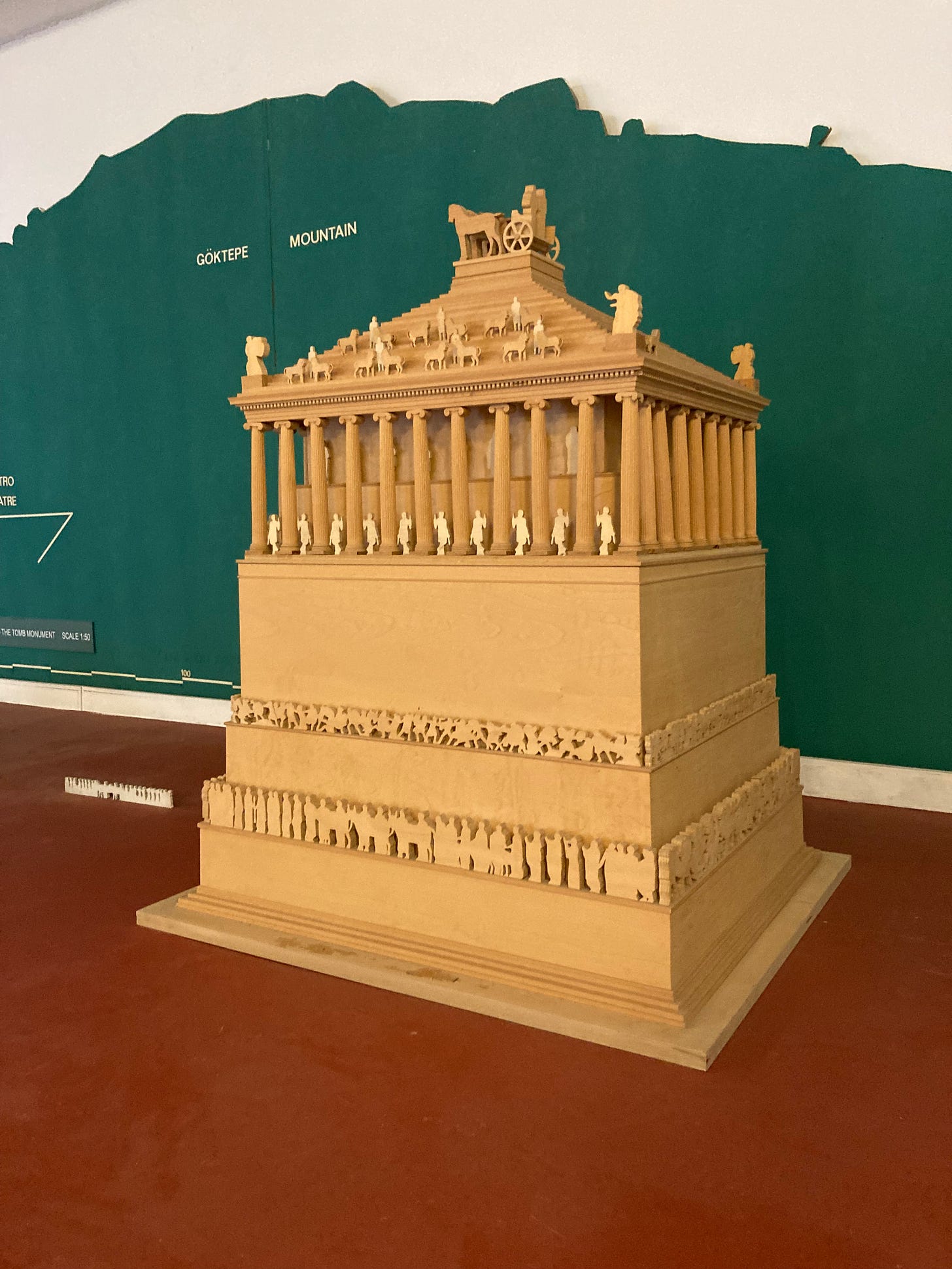
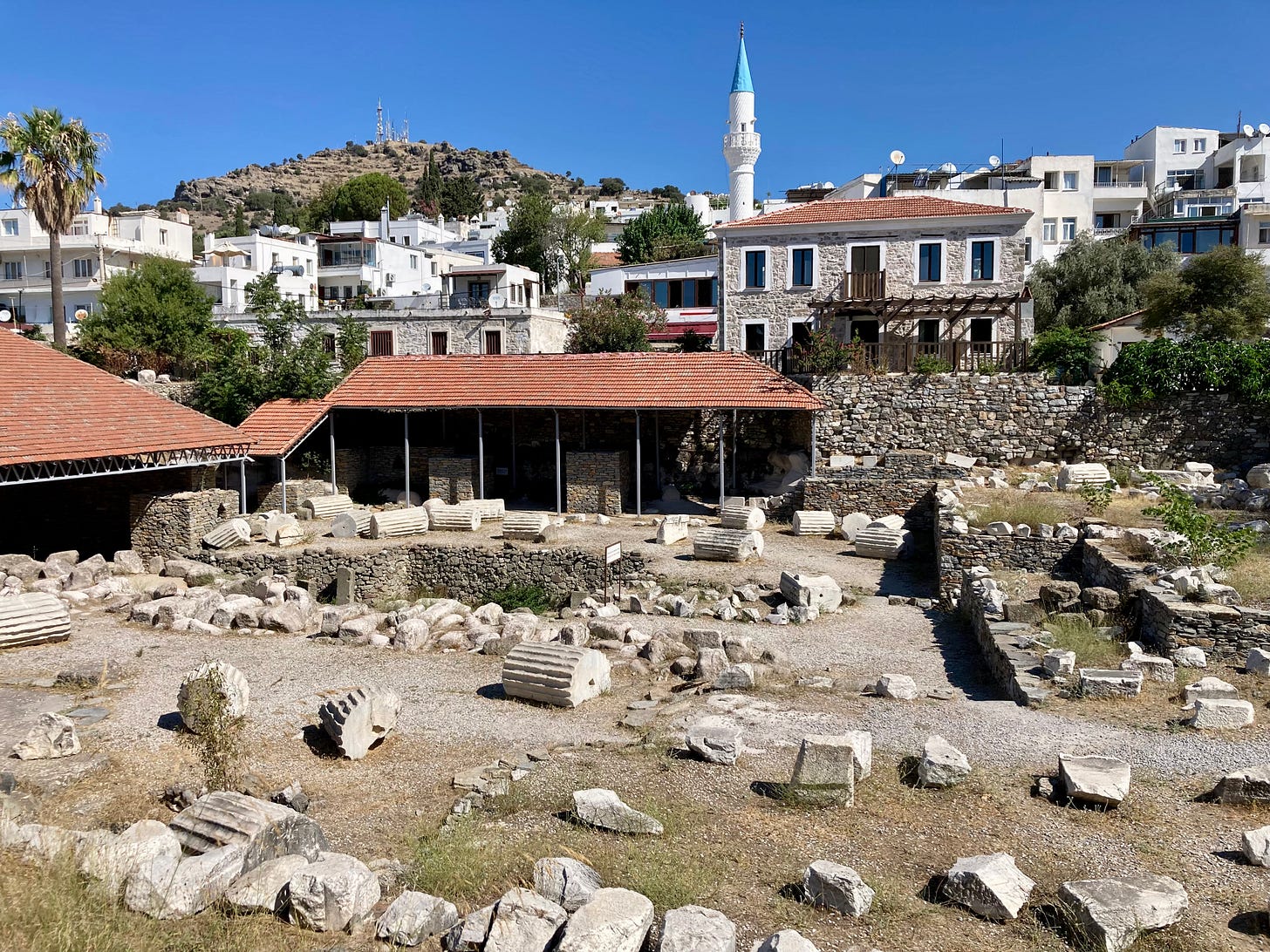
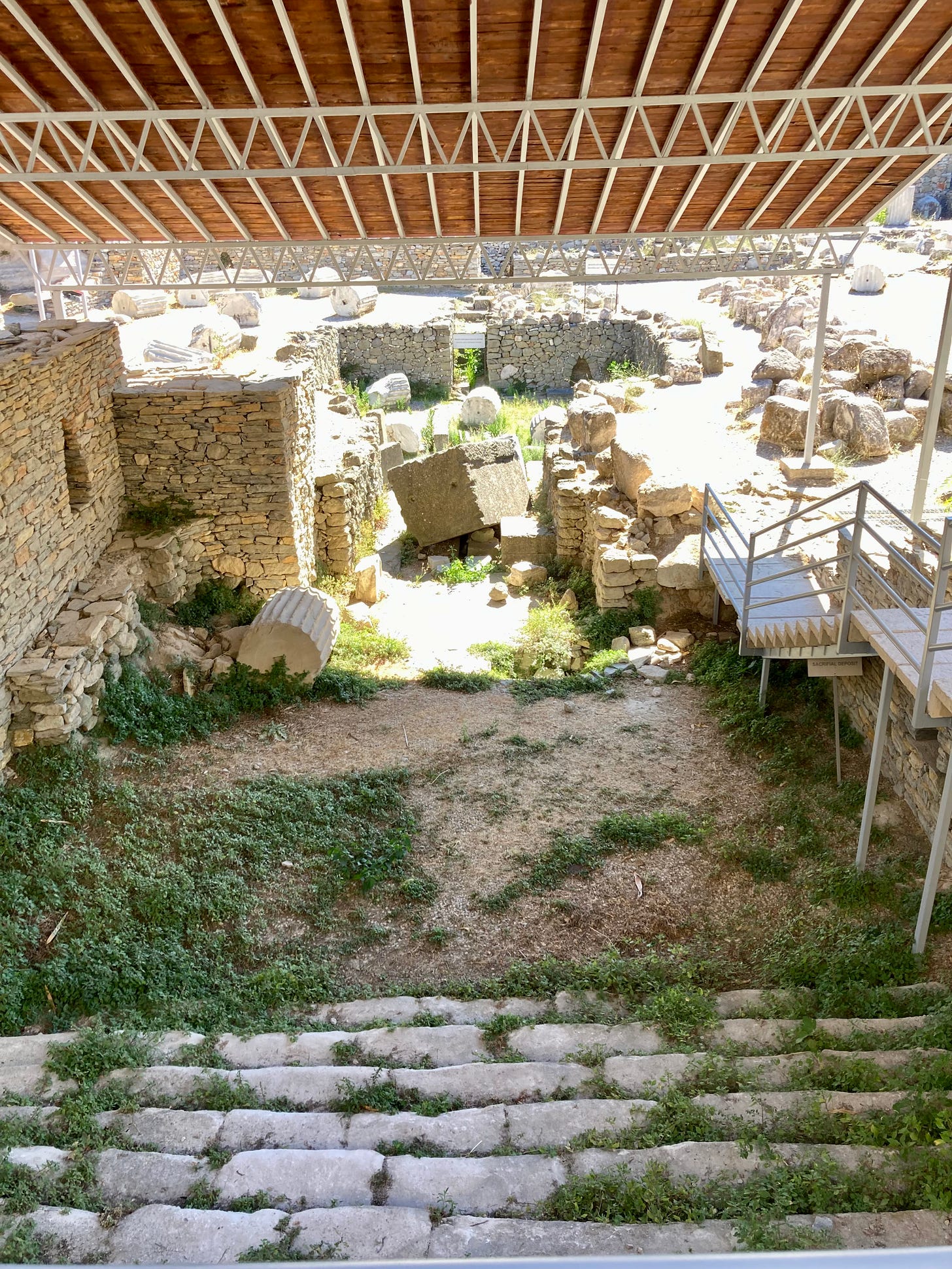
I’ve just discovered I can take a photo, highlight the text, and copy and paste it directly into here! Awesome huh! So, here’s some of the stories cut and paste from photos of the information boards:
INTRODUCTION
Just ten meters behind you, there existed the east front of the colossal memorial erected in honour of Mausolus and called after him "the Mausoleion".
The model shown on the photos, illustrates the principal features of the building. These can be deduced from the surviving evidence, which derives from three different sources:
'The Quadrangle', i.e. the huge quadrangular cutting in the native rock, is still visible in the open air, which indicates the position of the Maussollos tomb and the lower outline of the original superstructure
The fragments of architectural and sculptural marbles, which were found lying in the earth fill, covered the Quadrangle during the excavations by the British in 1857 and their Danish successors between the dates of 1970-77. Most of the surviving sculptural fragments are in the British Museum, while samples of the recently discovered remains, primarily of architectural importance, are on display in the present porch
Ancient and medieval evidences in particular are the Elder Pliny's description of the Mausoleion (1 century A.D.) and the report of its demolition in 1552 by the Hospitaliers from Rhodes, who searched for lime and building stones for repairing the Castle of St. Peter at Bodrum.
(Excavation of this site were initiated in 1857 by the British archaeologist Charles Newton who had obtained a permit from the Sultan.)
The Aegean area has always been hotly contested by the peoples living around it. After the failure of the Persian attempt to conquer Greece in 480 B.C. all islands and many cities on the west coast of Asia Minor were subjected to the rule of Athens.
However, about 385 B.C. it was agreed that all cities in Asia Minor should be recognised as primarily depending on the sovereignty of the Persian King.
This situation was soon exploited by the provincial governors of the King, the so called Satraps, to extend their power from their inland possessions to the shores of the Aegean and even to compete with the Greeks for the domination of the islands.
One of these vassals was Maussollos, who had inherited the rule of the Carian Satrapy about 377 B.C. Until that time the province had been governed from Mylasa (Milas).
But soon after his ascension to the throne Maussollos decided to move his residence to Halikarnassos, which offered the particular opportunity of being situated at a well-protected harbour, from which there was easy access to the Aegean Sea.
Incorporating the population of the entire Halikarnasssos peninsula Maussollos enlarged the city of Halikarnassos and established his residential palace with a secret military harbour on the rock which nowadays is occupied by the Castle of St. Peter (the Bodrum Castle which we visited the next day). His magnificent tomb was probably erected to commemorate his merits as benefactor and founder of the new Halikarnassos.
For Maussollos tomb chamber and its entrance a 2 m deep cutting was made in the bottom of the foundations of the monument.
It was placed excentrically in the ground plan, perhaps to make it difficult for potential tomb robbers to trace its position. There was originally access from a spacious staircase on the west side of the building.
Fragments have been found of a double door of white marble that was placed between the corridor and the tomb chamber and of a finely tooled sarcophagus of the same material.
When the burial had taken place the entrance was definitely closed by means of a huge block of green stone. Ingenious tubular dowels in its top and bottom secured that it could never be removed from the outside.
Traces of cutting with the chisel show that attempts were actually made to clear it away, but Newton found the block still in its original position,
At the foot of the staircase various offerings were placed to placate the dead, such as alabaster jars with perfume (a particularly magnificent inscribed specimen was found by Newton).
Food for Maussollos in the Nether World was deposited in the form of raw meat of butchered animals: 2 oxes, possibly bulls, 2 calves, 21 sheep or goats, 7 lambs or kids, 3 roosters, 11 chicken and 7 doves. This find was excavated by the Danish expedition.
An eyewitness report of the 16th century describes how the Knights of St. John discovered the tomb after having demolished the whole of the superstructure of the monument, and how the tomb was secretly opened and plundered by pirates.
Remains of what they left were recently found in the tomb chamber and its vicinity, in particular a large number of textile ornaments of gold, sherds of the finest Attic pottery, fragments of ivories and semiprecious stones.
Just as on the right side is the temple of Aphrodite and the fountain already mentioned, so on the left wing is the royal palace which King Maussollos had built to his own plan.
From this is seen, extending on the right side, the emporium and the clear outline of the city wall, and under the left is a secret harbour lying hid under moles, in such a way that no one can see or know what is going on in it so that the king from his own palace could see what was necessary for his sailors and soldiers, without any one else knowing.
Therefore when, after the death of Maussollos, his wife Artemisia began to reign, the Rhodians were indignant that a woman should rule over the cities throughout Karia equipping a fleet they set out to seize the kingdom
This was reported to Artemisia. She hid the fleet in the harbour, concealing the rowers and the marines she had got together, and ordered the rest of the citizens to man the walls.
Now, when the Rhodians had landed, with a fleet well equipped, in the greater harbour, she commanded the citizens to greet them from the walls and to promise to surrender the town. They (the Rhodians) left their ships unmanned and penetrated within the wall. Artemisia, using an artificial outlet into the sea, suddenly let out her fleet from the lesser harbour and thus sailed into the greater.
She then landed her soldiers and took the empty Rhodian fleet away to sea. So the Rhodians, having no place of retreat, were surrounded and killed in the market square itself.
So Artemisia, placing her own troops and rowers in the ships of the Rhodians, sailed for Rhodes.
But when the Rhodians saw their own ships come wreathed with laurel, they thought their fellow-citizens returned victorious and let the enemy in. Then Artemisia took Rhodes, killed the leading citizens, and set up a trophy of her victory in the city of Rhodes, having two bronze statues made, one of the city of Rhodes, the other in her own likeness. She had the latter figured as setting a brand upon the city of Rhodes."
In the year 1522, when Sultan Suleman was preparing to attack Rhodes, the Grand Master, knowing the importance of the Castle of St. Peter, and being aware that the Turks would seize it easily at the first assault, sent some knights thither to repair the fortress and make all due preparations to resist the enemy. Among the number of those sent was the Commander de la Tourette, a Lyonnese knight, who was afterwards present at the taking of Rhodes, and came to France, where he related what I am now about to narrate, to M. d'Alechamps, a person sufficientlv known by his learned writings, and whose name I mention here only for the purpose of publishing my authority for so singular a story.
When the knights had arrived at Mesy (Bodrum), they at once commenced fortifying the castle; and looking about for stones wherewith to make lime, found no more suitable or more easily got at than certain steps of white marble, raised in the form of a terrace in the middle of a field near the port which had formerly been the great place of Halikarnassos. They therefore pulled down and took away these marble steps, and finding the stone good, proceeded, after having destroyed the little masonry remaining above ground, to dig lower down, in the hope of finding more.
In this attempt they had great success, for in a short time they perceived that the deeper they went, the more the structure was enlarged at the base, supplying them not only with stone for making lime, but also for building.
After four or five days, having laid bare a great space, one afternoon they saw an opening as into a cellar. Taking a candle, they let themselves down through this opening, and found that it led into a fine large square apartment, ornamented all round with columns of marble, with their bases, capitals, architrave, frieze and cornices, engraved and sculptured in half-relief. The space between the columns was lined with slabs and bands of marbles of different colours, ornamented with mouldings and sculptures, in harmony with the rest of the work, and inserted in the white ground of the wall, where battlescenes were represented sculptured in relief.
Having at first admired these works, and entertained their fancy with the singularity of the sculptures they pulled it to pieces, and broke up the whole of it, applying it to the same purpose as the rest.
Besides this apartment, they found afterwards a very low door which led into another apartment, like an antechamber, where was a sepulchre with its sarcophagus and tympanum-shaped lid of white marble, very beautiful, and of marvelous lustre. This sepulchre, for want of time, they did not open, the retreat having already sounded.
The day after, when they returned, they found the tomb opened, and the earth all round strewn with fragments of cloth of gold, and spangles of the same metal, which made them suppose that the pirates, who hovered along this coast, having some inkling of what had been discovered, had visited the place during the night, and had removed the lid of the sepulchre. It is supposed that they discovered in it much treasure.
It was thus, that this magnificent tomb, which ranked among the seven wonders of the world, after having escaped the fury of the barbarians, and remained standing for the space of 2247 years, was discovered and destroyed to repair the Castle of St. Peter, by the Knights of Rhodes, who immediately after this were driven completely out of Asia by the Turks.
Good on you if you made it to the end!
Next stop: Bodrum Castle.
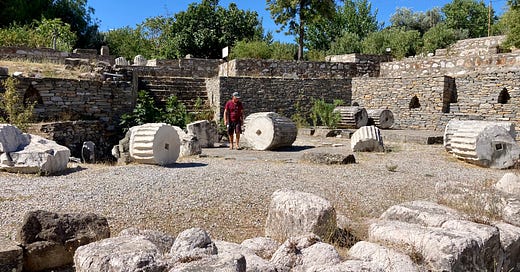


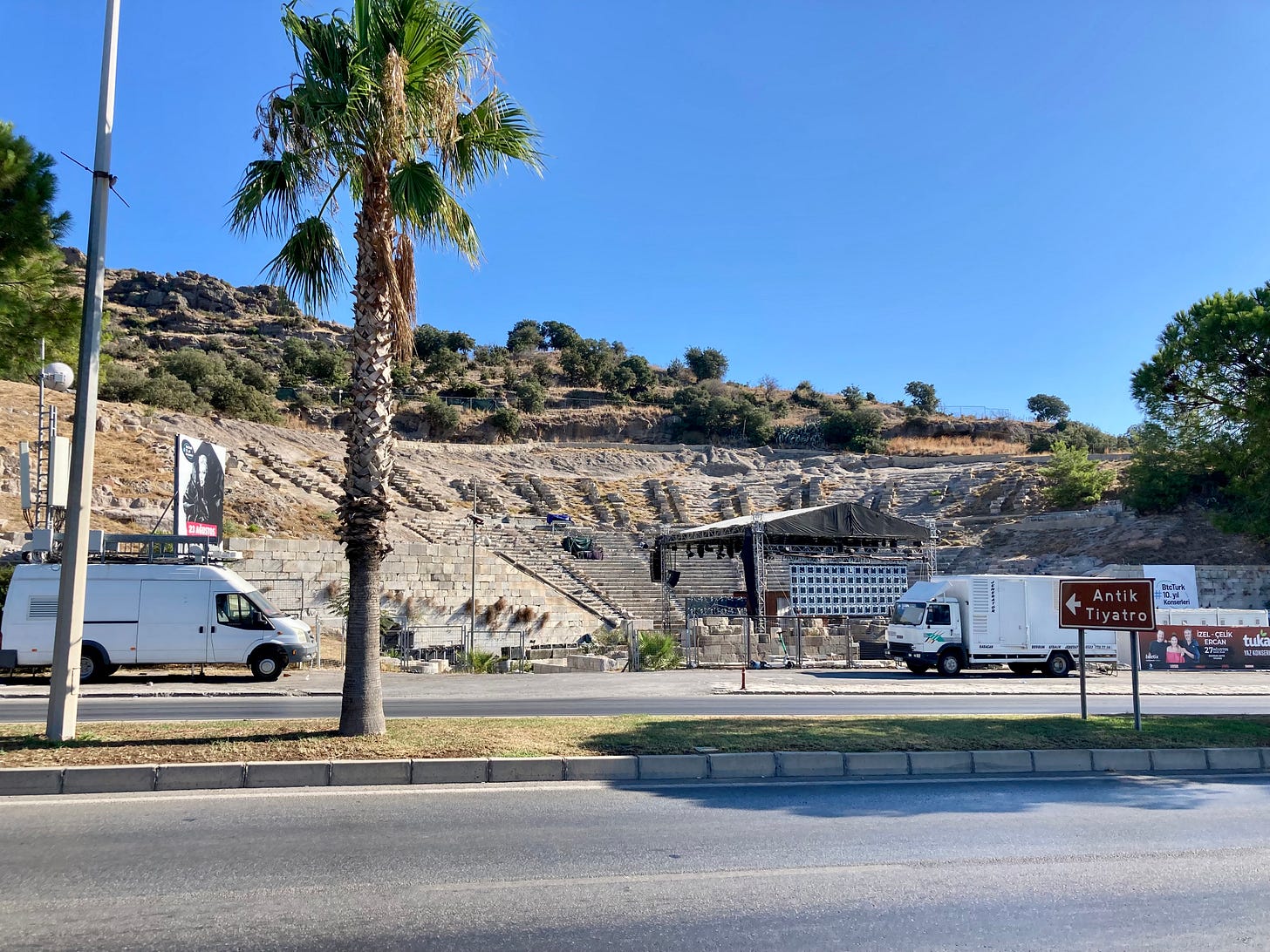
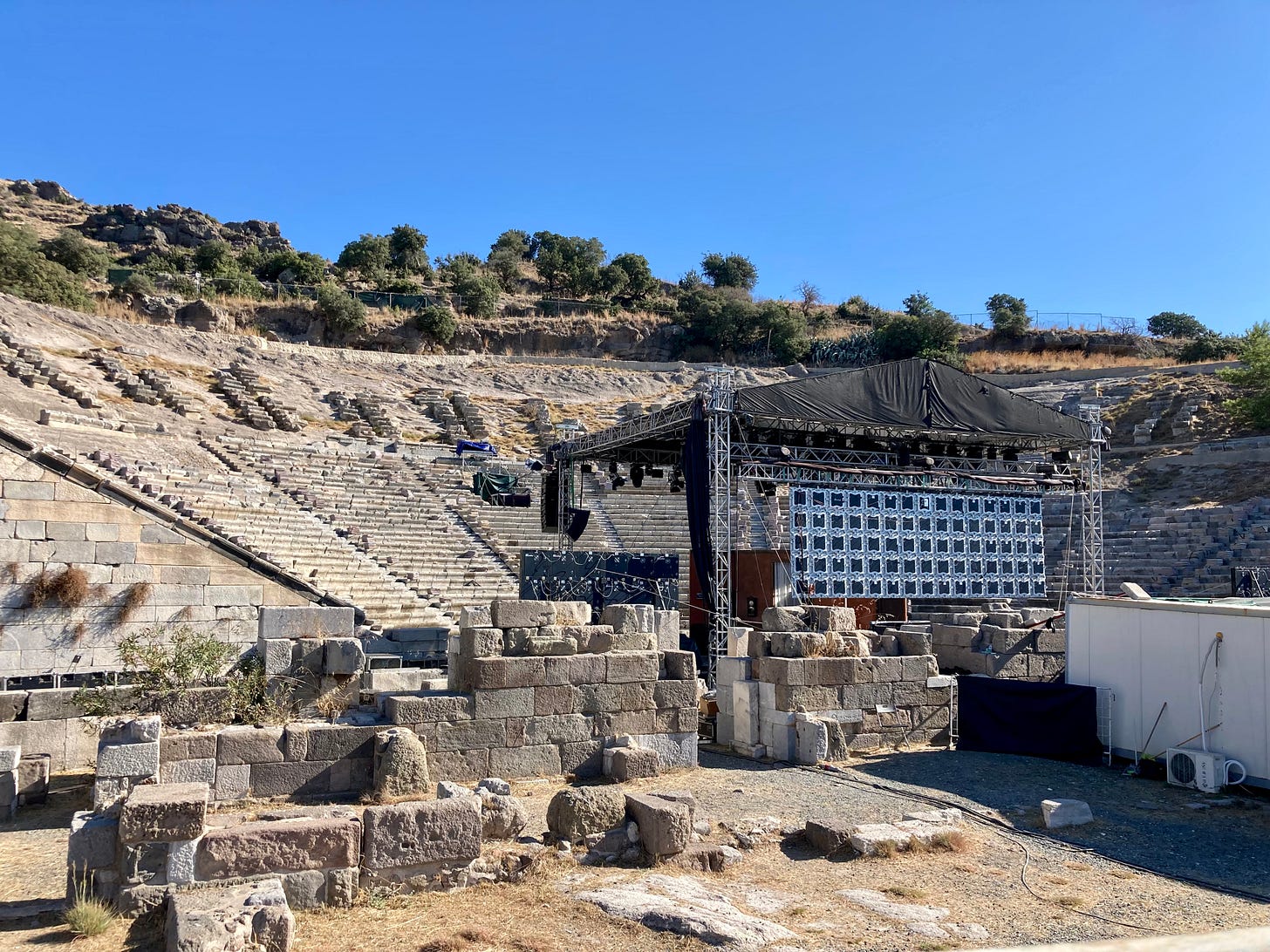

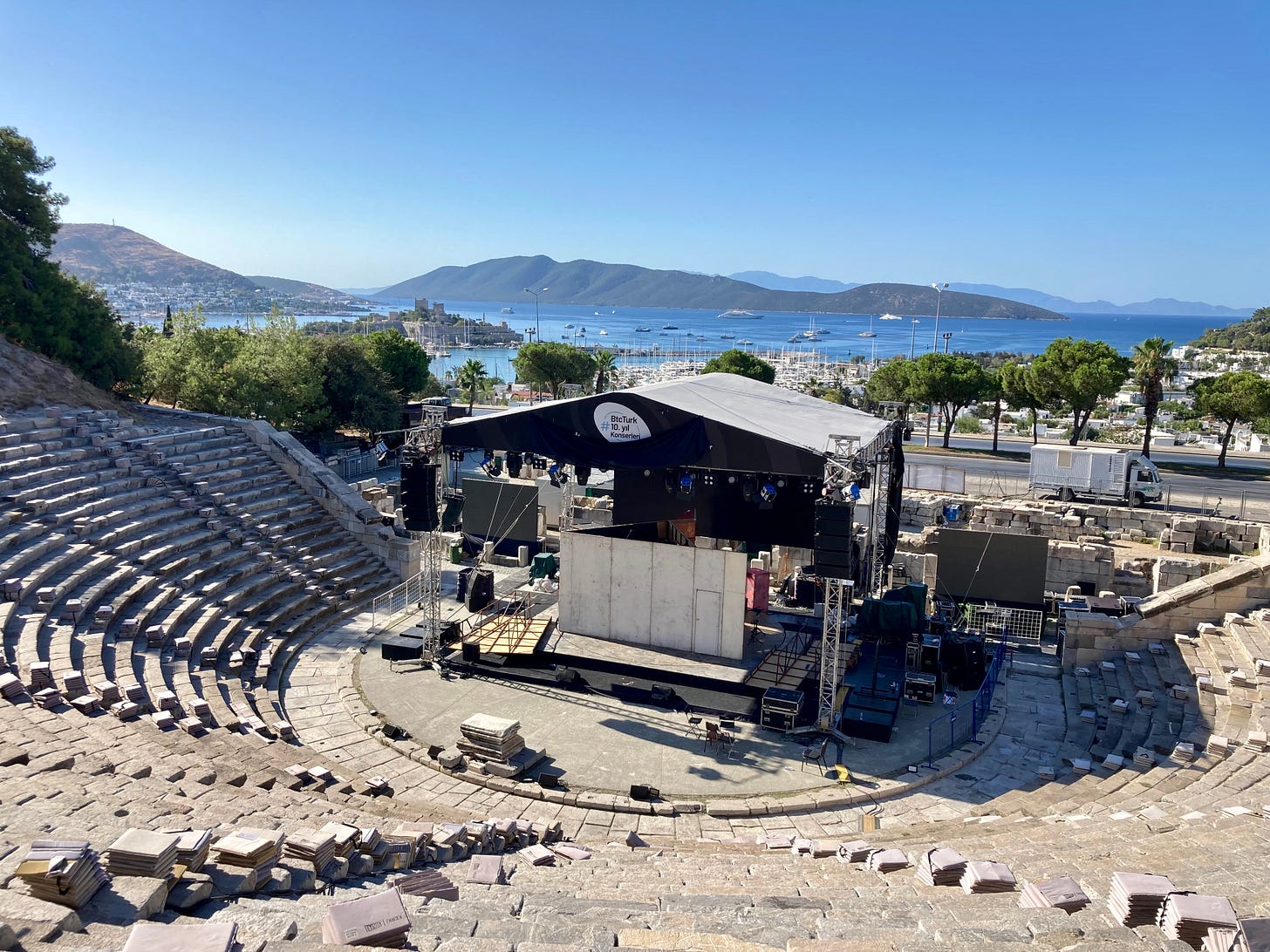


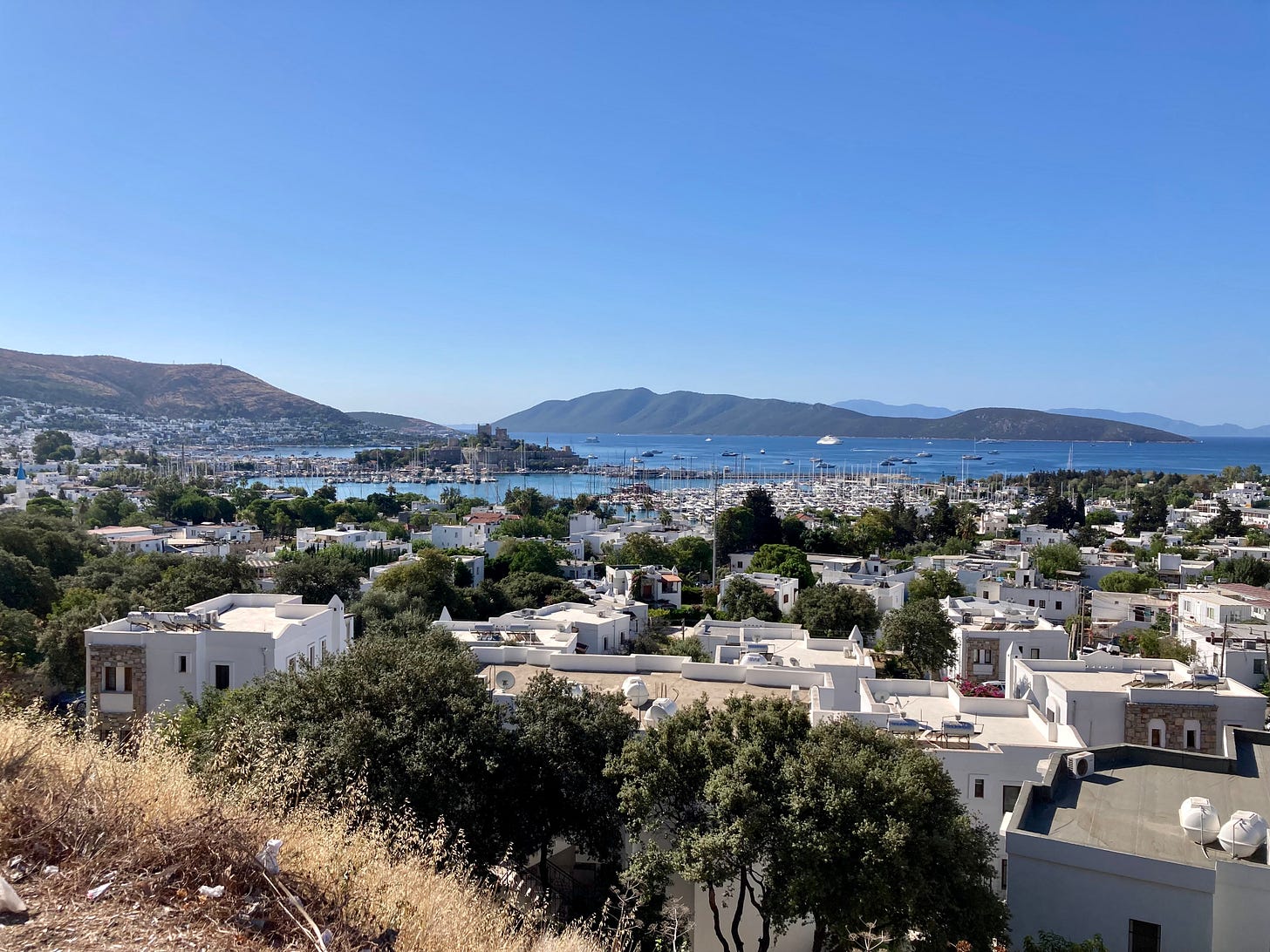

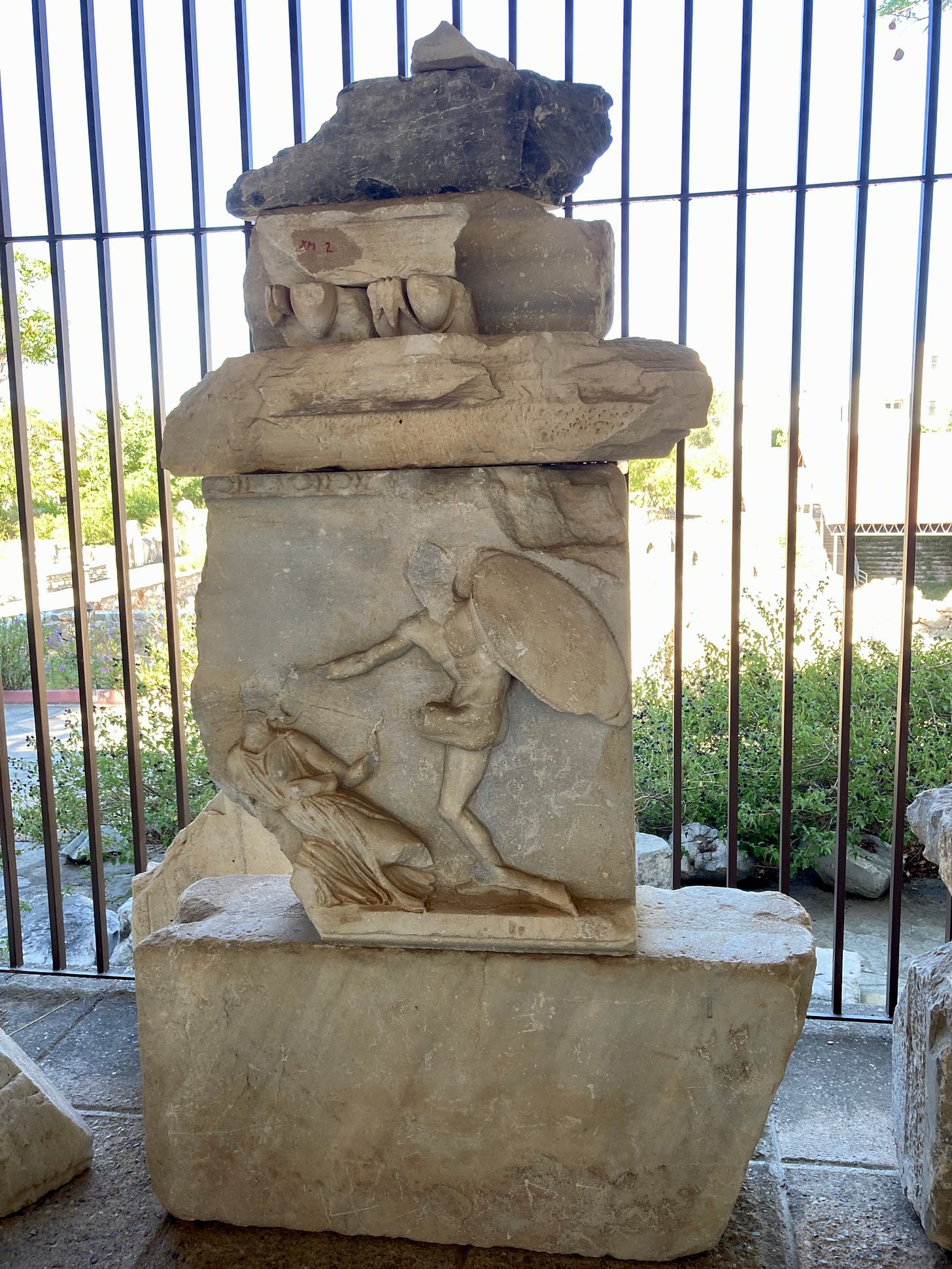
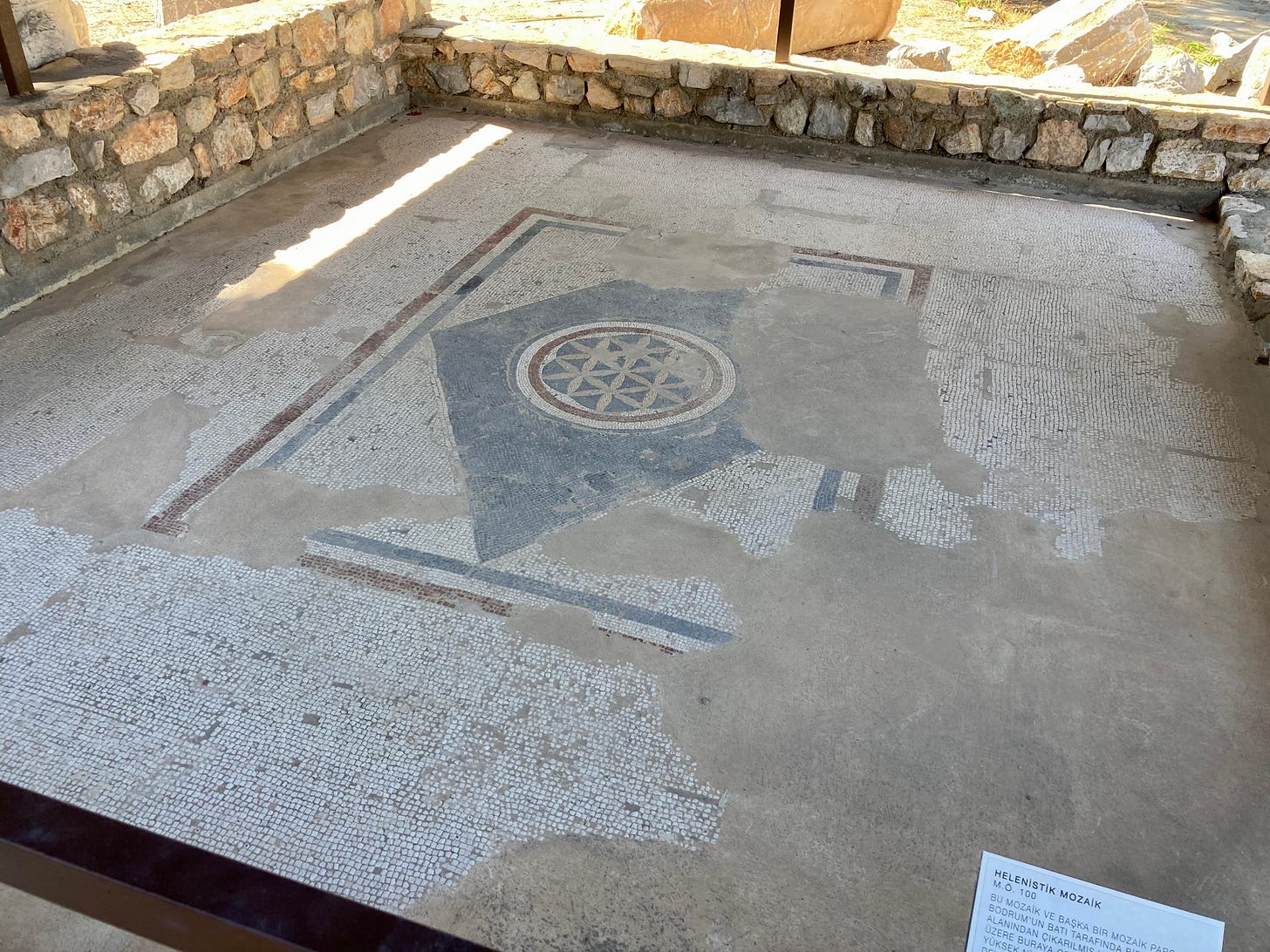
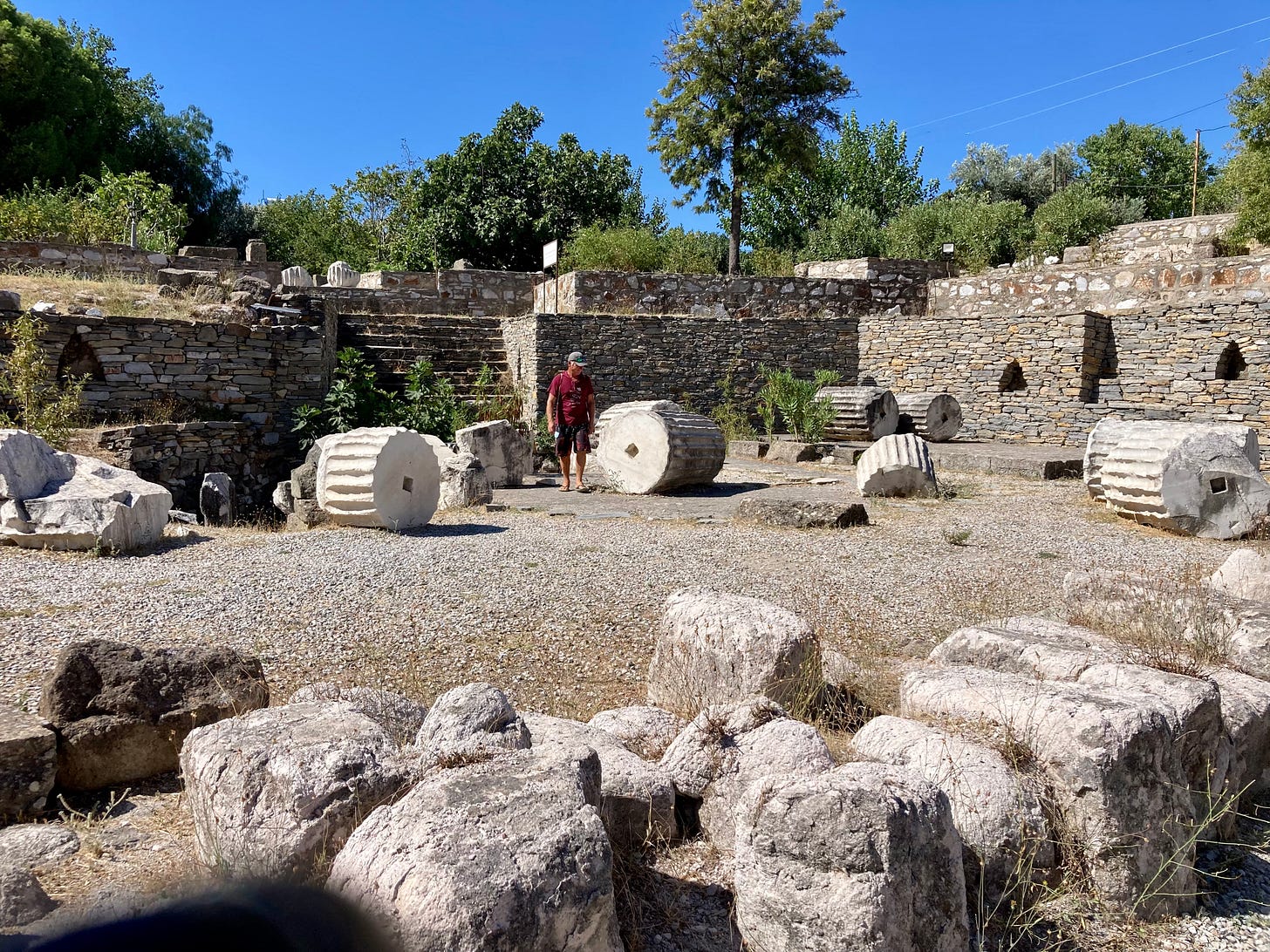
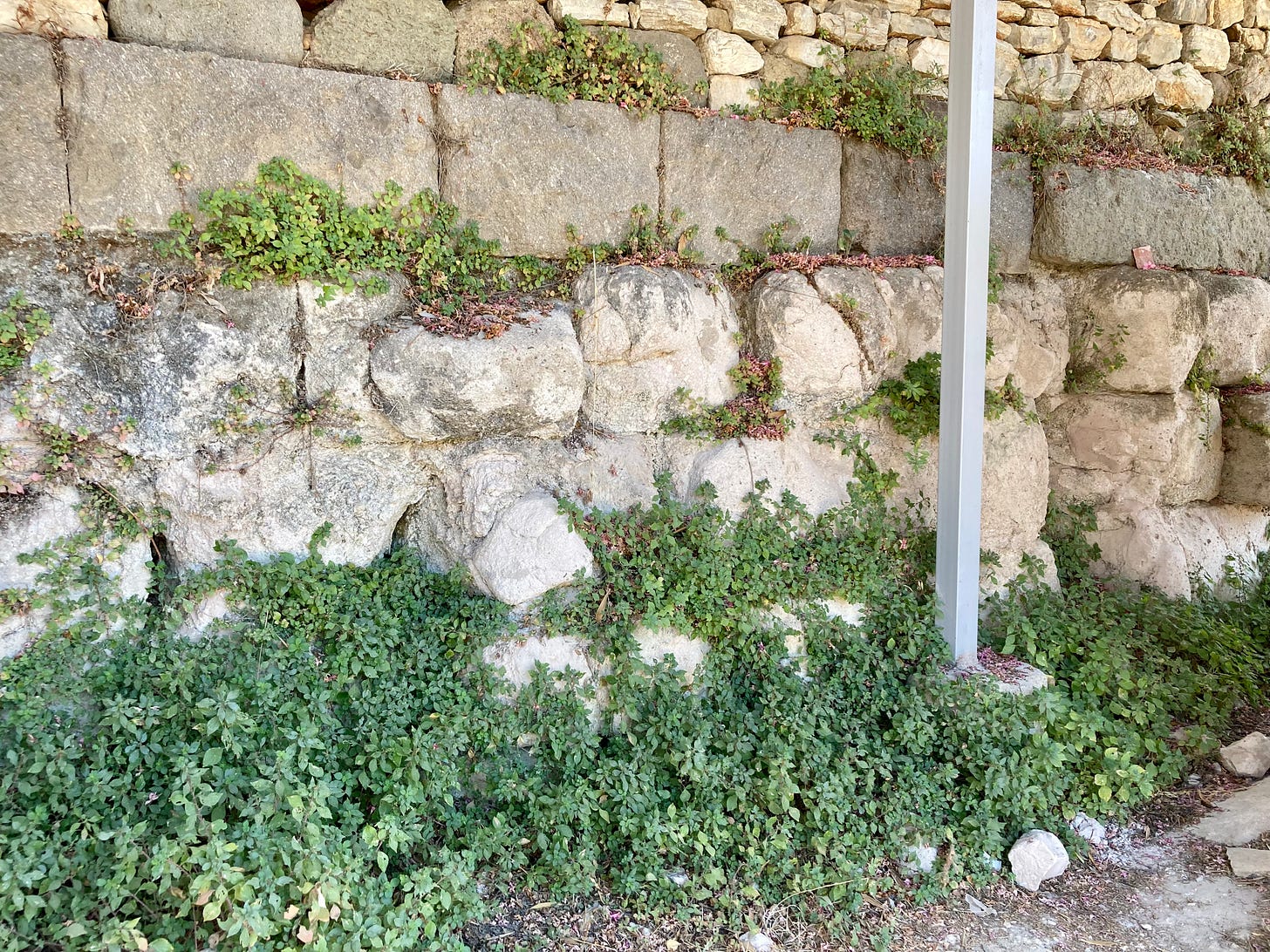
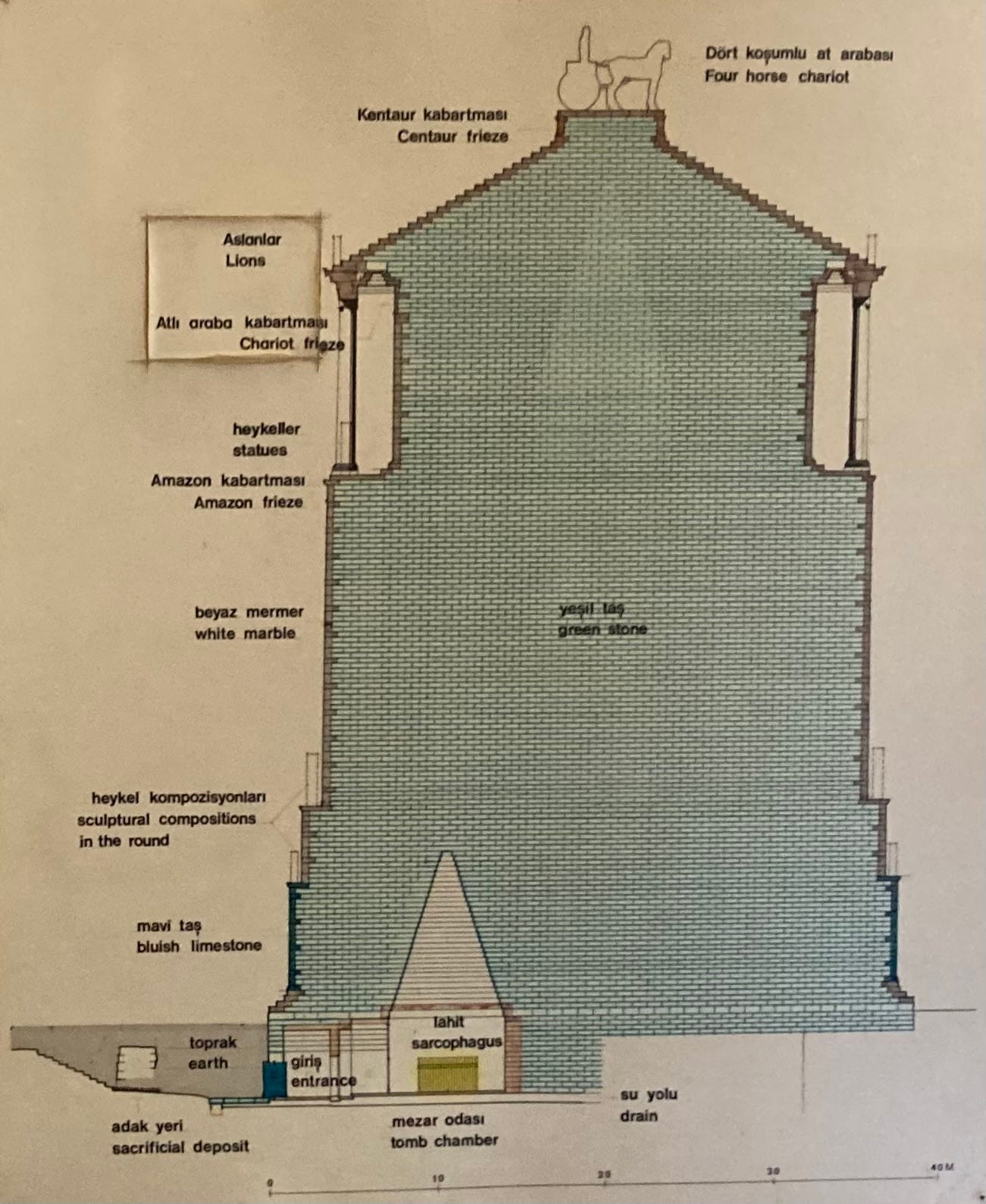

Share this post